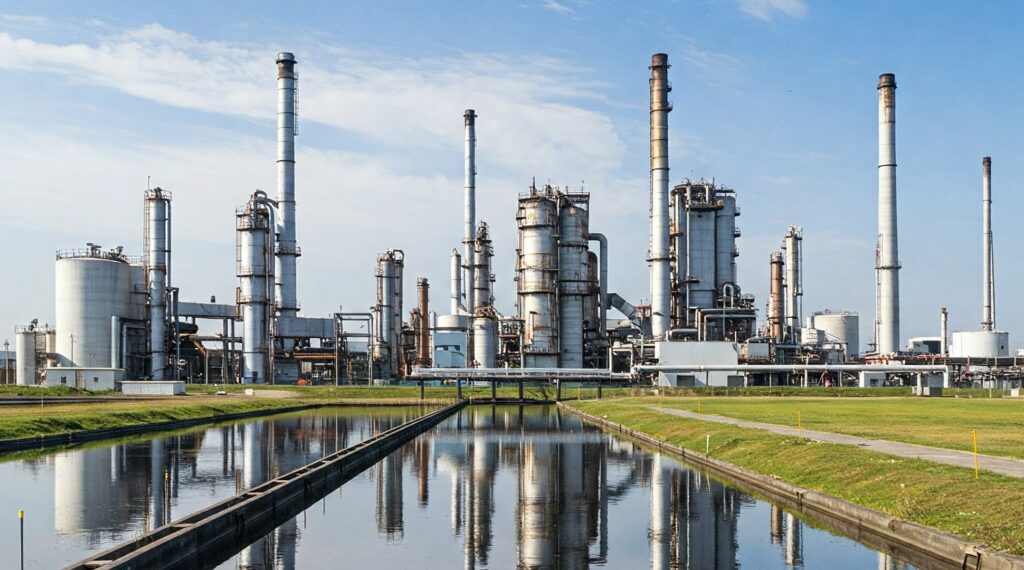Water is one of the most critical resources for any industry. From processing to cooling, industries use a large volume of water every day. But with rising water scarcity and strict environmental regulations, the pressure to recycle and reuse wastewater is growing.
Most industries are now focusing on reducing their fresh water demand and moving towards Zero Liquid Discharge (ZLD). This shift is not just about compliance—it’s about long-term sustainability and cost control.
However, traditional water treatment technologies like Reverse Osmosis (RO) and Multiple Effect Evaporators (MEE) come with heavy costs. They need high energy, involve complex operations, and are not always reliable when wastewater quality keeps changing.
This is where non-conventional, energy-efficient, and low-cost solutions become essential. In this blog, we’ll explore where industrial wastewater comes from, what reuse options are available, and how modern approaches—like the one offered by Scaleban—are changing the game.
Where Does Industrial Wastewater Come From?
Every industry generates wastewater from different parts of its operations. Understanding the sources is the first step toward effective reuse and recycling.
Industrial wastewater is not just one type of water—it’s a combination of many streams, each with different characteristics. Some streams are high in salts, others in organic matter, and some may have heavy metals or chemicals. Treating all of them together makes wastewater management challenging.
1. Process Effluent
This is the main stream of wastewater. It comes directly from manufacturing or chemical processes. It usually contains a mix of chemicals, solids, and other pollutants, depending on the industry type.
2. Cooling Tower Blowdown
Cooling towers use water to remove heat from industrial equipment. Over time, dissolved salts build up in the circulating water. To control this, part of the water is drained—this is called blowdown. Because most cooling towers operate at low cycles of concentration (COC), they end up releasing a large volume of blowdown water, which becomes part of the wastewater load.
3. WTP Reject
Water Treatment Plants (WTPs) purify raw water before it’s used in the plant. The reject or waste stream from these plants, often containing concentrated impurities, adds to the total wastewater volume.
4. Effluent Treatment Plant (ETP)
All the wastewater streams—process effluent, blowdown, and WTP reject—eventually go to the Effluent Treatment Plant. The ETP treats this mixed water before it is discharged or reused. But when all these sources combine, the treatment load becomes heavy and complex.
Industries need smarter ways to deal with this combined wastewater—especially if they aim to recycle it efficiently.
The Challenge with Conventional Technologies
Reusing wastewater makes sense—but doing it efficiently is the real challenge. Most industries still depend on conventional technologies like Reverse Osmosis (RO) and Multiple Effect Evaporators (MEE) to recycle wastewater.
But these systems come with serious drawbacks:
1. High CAPEX and OPEX – Setting up RO and MEE systems requires a huge capital investment. On top of that, their operating cost is also high—especially with increasing energy rates and maintenance needs.
2. Heavy Energy Consumption – RO and MEE both consume a lot of power. MEE in particular needs large amounts of steam or electricity to evaporate water. This drives up energy bills and increases the plant’s carbon footprint.
3. Low Tolerance for Wastewater Variation – Industrial wastewater is never consistent. It changes with production batches, raw material quality, or seasonal variations. Conventional systems don’t adapt well to these changes. When the feed quality varies, performance drops, and systems can fail or need frequent cleaning.
All these challenges make the entire wastewater reuse process more complex and costly. This is why industries are looking for new-age, flexible, and cost-effective solutions that work better under real-world conditions.
Wastewater Reuse
Many industries treat wastewater using advanced systems depending on their needs. Another effective approach is to reuse treated wastewater directly in cooling towers through “SCALEBAN” technology by conditioning it to control scale, corrosion, and biofouling.
With the right conditioning, cooling towers can operate at high Cycles of Concentration—up to 15 or even 20—using water with TDS levels as high as 300,000 ppm. This reduces blowdown by up to 90% and lowers fresh water demand.
The reuse process becomes more efficient and sustainable by focusing on water chemistry management rather than intensive removal of every contaminant. It also supports long-term Zero Liquid Discharge (ZLD) goals, especially in water-stressed regions.
Unlike conventional treatment methods that often aim to remove every impurity, this approach focuses on managing the water’s chemical behavior. It allows industries to work with the water they already have, rather than relying entirely on fresh supply or energy-intensive treatment processes.
This method also adapts well to fluctuations in wastewater composition, which are common in industrial operations. It offers a stable, low-maintenance path toward efficient water reuse—making it suitable for both new plants and retrofits.
SCALEBAN ADVANTAGES
Here’s what makes SCALEBAN stand out:
- No energy required for operation
- Zero CO₂ emissions from the system
- Handles variable wastewater quality with consistent performance
- Maintenance free for 20 years
- Zero freshwater required in cooling towers
- High COC operation (15–20), reducing blowdown by up to 90%
- Zero footprint – fits directly in the pipeline (online system)
- Saves high CAPEX & OPEX by eliminating RO and MEE for ZLD
- Ensures scale-free, corrosion-free, and biofouling-free operations
- Make industries contribute to UN Sustainable Development Goals (SDGs) – 6 (Clean Water), 7 (Affordable Energy), 13 (Climate Action), and 14 (Life Below Water)
Conclusion
Industrial wastewater reuse is no longer optional—it’s a strategic necessity. But to make it work, industries need solutions that are not just technically sound, but also cost-effective, energy-efficient, and easy to operate.
Conventional systems like RO and MEE may have served their time, but today’s challenges call for a new approach. SCALEBAN technology offers industries the flexibility to reuse water without the burden of high cost, complexity, or energy demand.
